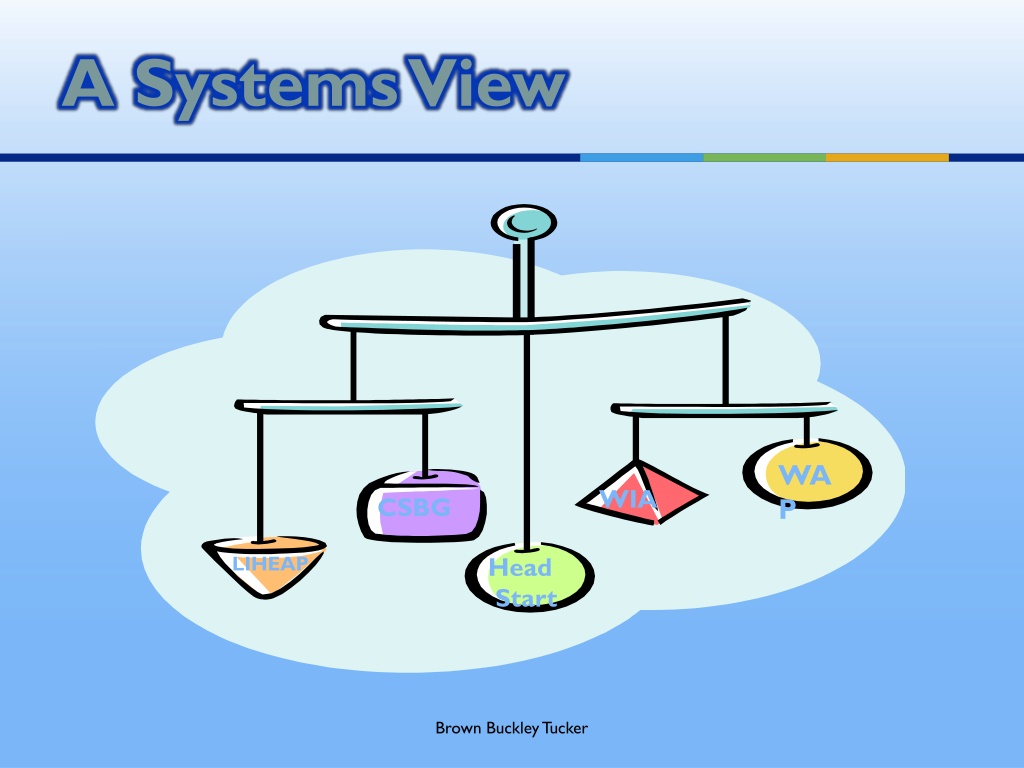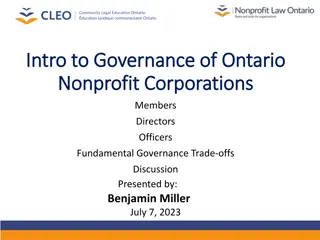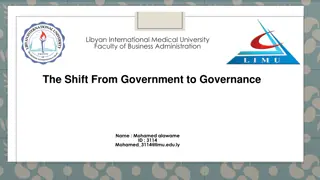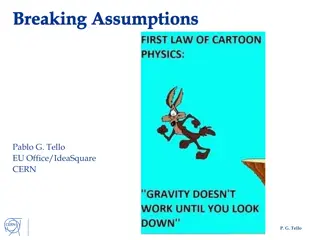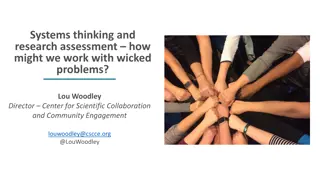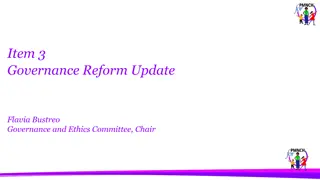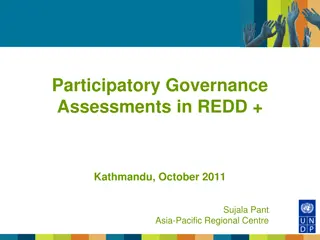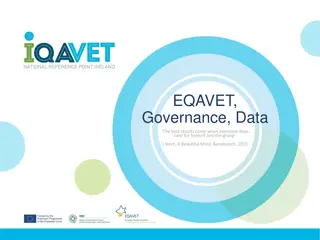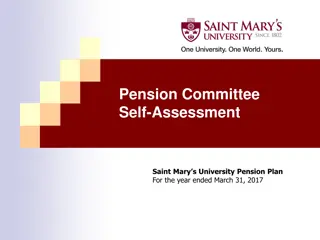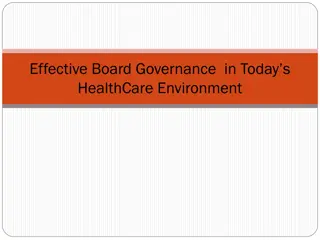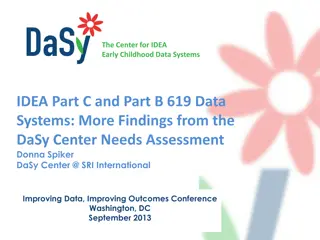Understanding Systems Thinking for Effective Program Governance
Systems thinking is a conceptual framework that emphasizes viewing organizations as integrated systems, requiring thoughtful planning and time to implement changes effectively. This approach is crucial for State agencies overseeing programs like CSBG and Head Start to address systemic issues, improve governance, fiscal control, and program effectiveness. Quick fixes often lead to recurring problems, highlighting the importance of holistic approaches to enhance overall agency capacity and compliance with program requirements.
Download Presentation

Please find below an Image/Link to download the presentation.
The content on the website is provided AS IS for your information and personal use only. It may not be sold, licensed, or shared on other websites without obtaining consent from the author. Download presentation by click this link. If you encounter any issues during the download, it is possible that the publisher has removed the file from their server.
E N D
Presentation Transcript
A Systems View WA P WIA CSBG LIHEAP Head Start Brown Buckley Tucker
What is a System? An organized collection of parts (or subsystems) that are highly integrated to accomplish an overall goal. Carter McNamara
Systems Thinking BROAD perspective of overall: Structures Patterns Cycles
Systems Thinking: Systems thinking is a conceptual framework, a body of knowledge and tools to make the full patterns clearer, and to help us see how to change them effectively. Peter M. Senge, The Fifth Discipline
I.M. 94 State CSBG Lead Agencies should ensure that agency Head Start programs have ongoing systems of oversight and monitoring. It is important to stress that quick fixes to identified problems typically result in a reoccurrence of the problems. Most areas needing improvement are often linked to major systems that often require thoughtful planning and time to implement needed changes.
I.M. 94, cont. the Community Services Network must continue to focus its efforts on strengthening overall agency governance and administration, fiscal control, program effectiveness and accountability to assure capacity to comply with all program requirements of the various programs administered by the agency.
I.M. 49 Recognizing that CSBG does not succeed as an individual program Special attention will be paid to State capabilities to identify the needs among eligible entities, particularly those related to strengthening OVERALL program administration, fiscal management,
I.M. 49, cont. State officials (should) reinforce the importance of effective management SYSTEMS As part of oversight, we should implement on-going SYSTEM-WIDE actions to assure continued administrative and fiscal integrity, program effectiveness, and accountability among ALL PROGRAMS administered by CAAs.
I.M. 49, cont. Most areas needing improvement are often linked to major SYSTEMS State officials (should) reinforce the importance of effective management SYSTEMS
I.M. 49, cont. Agencies in the past have often focused their energies on preparing for the monitoring test instead of implementing on-going SYSTEMS that identify areas needing improvement
I.M. 49, cont. Agencies that choose to operate each of their programs separately without a coordinated strategy to address the multi- faceted causes and conditions of poverty are meeting neither the letter nor the spirit of the CSBG act. Community Action is one agency with one mission.
NASCSPs Standard Monitoring Principles and Practices for CSBG State monitors should look at more than compliance with program rules and regulations. State monitors need to take a SYSTEMS view of each CAA
High Functioning Systems Continually exchange feedback among the various parts to ensure that they are aligned When weakened or misaligned, the system needs to make necessary adjustments to achieve its goals
Assessing Your States Monitoring System: Is the internal structure of your CSBG office and monitoring responsibilities clear and integrated? 1. Do you have collaborative relationships with other CAA funders (Head Start, HUD, Dept. of Energy, others?) 2. Does your monitoring tool look at the WHOLE agency, or just CSBG programs ? 3. How are staff trained to take a systems approach to monitoring? 4.
Assessing Your States Monitoring System: How does the CSBG office keep up with the changing CAA environment (NASCSP Monitoring Practices; OCS I.M. releases, Head Start & other funding requirements, etc?) 5. What are your systems for ensuring adequate and timely follow-up to the results of monitoring? 6. How do you use monitoring results to identify and provide system-wide training and technical support to CAA s? 7.
CSBG Act And OMB circulars Monitoring Principles and Practices NASCSP Monitoring Principles OCS Information Memorandums Monitoring Topic Areas IM 94 Head Start PRISM Reviews IM 49 ROMA IM 82 Monitoring Standards Monitoring Practices Tripartite Board
Program Administrator Any State Monitoring Structure Program Monitor Fiscal Monitor Program Finances at Agency #3 Program at Agency #1 Program at Agency #2 Program at Agency #3 Program Finances at Agency #1 Program Finances at Agency #2
ABC Community Action Board of Directors Executive Director CSBG Head Start Weatherization LIHEAP Housing Finance Head Start Staff Weatherization Staff CSBG Staff LIHEAP Staff Housing Staff Finance Staff Brown Buckley Tucker
NASCSP Monitoring Principles and Practices Congress Calls For More Accountability Monitoring Tool Monitoring Practices Monitoring Principles More than Compliance Board Effectiveness Mutual Respect Joint Problem Solving Systems to Inform & Follow Up Open Administrative Capacity Communications
A System for Monitoring Integrated Monitoring Structure Monitoring Tool Collaborative Relationships Staff Training HUD Dynamics of Change Weatherization Head Start
ABC Community Action Governance Fiscal Policies & Procedures Planning: Mission & Planning Admin. Systems & Procedures Evaluation Programs Partnerships Outcomes Brown Buckley Tucker
Discernment and Leadership for Monitoring Brown Buckley Tucker
Characteristics of Effective Leaders Integrity A deep understanding of the work Consistency Ability to listen Willingness to admit a mistake Decisive Brown Buckley Tucker
As a Monitor It is important to: Know your own tendencies and weaknesses so that you can take them into account Ask appropriate questions (refusing to accept conclusions without basis) Carefully consider the validity and sufficiency of information Evaluate evidence is it reasonable? What are the ramifications if it is true? Brown Buckley Tucker
Discernment The ability to analyze information with insight and judgment. Brown Buckley Tucker
To discern an overall pattern from a mass of detail Brown Buckley Tucker
Discernment Developing the art of discernment: Knowledge base which provides basis for discernment Experience Confidence in yourself and your judgments Guidance and feedback from an in-state mentor or out of state colleague Brown Buckley Tucker
